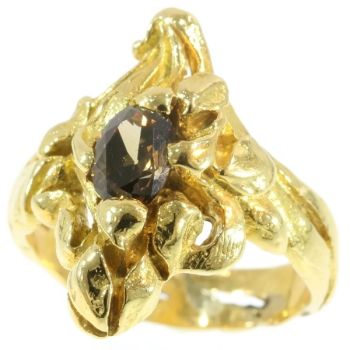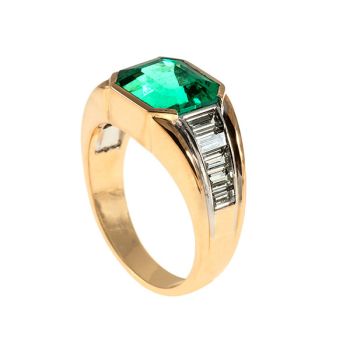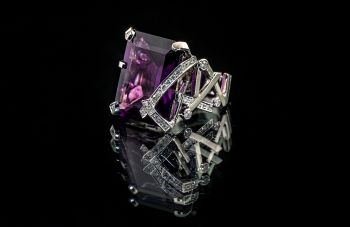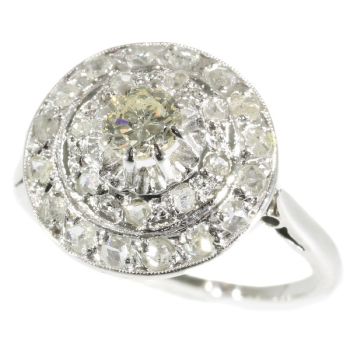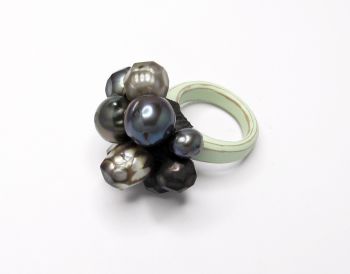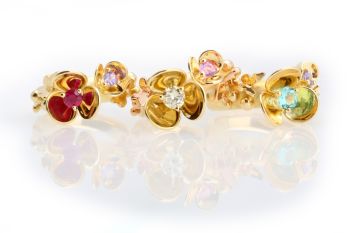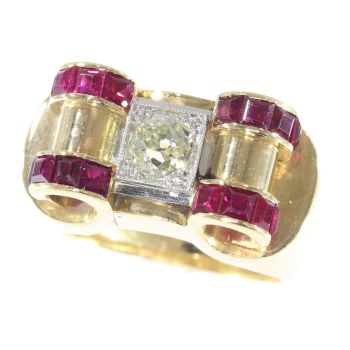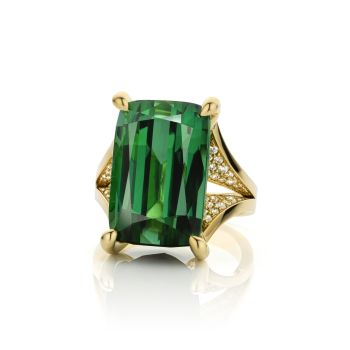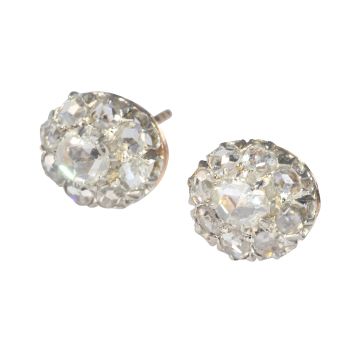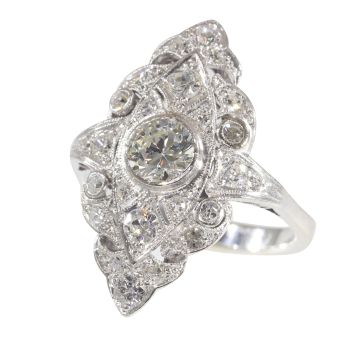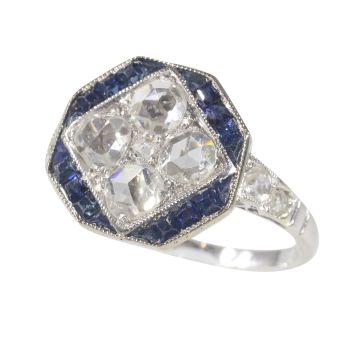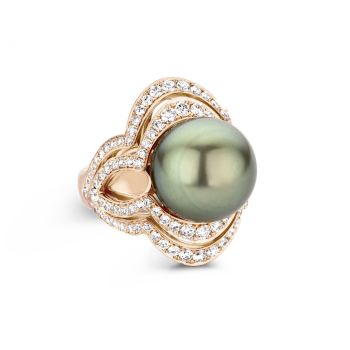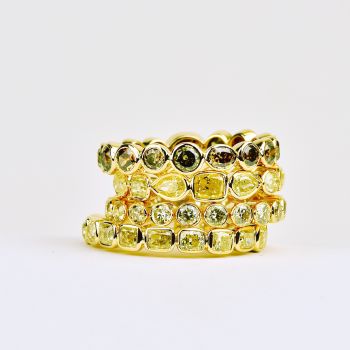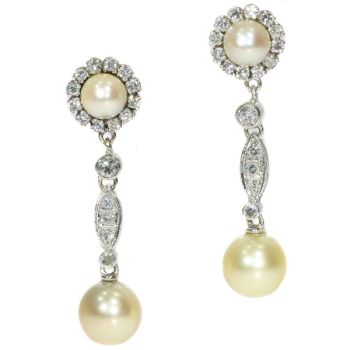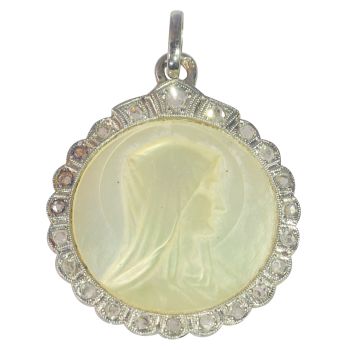Wièse's 4.86ct Diamond Ring, a Neo-Renaissance Legacy 1900
Wièse
Adin Fine Antique Jewellery
- About the artwork
This Late-Victorian Neo-Renaissance ring by Jules Wièse is a museum-quality marvel in Haute Joaillerie. Crafted in France from 18K yellow gold and platinum, the ring incorporates two putti, symbolic of love and innocence, adding layers of historical andemotional meaning. At its core lies a 4.86-carat old European cut diamond. Wièse's craftsmanship is renowned, even cited in multiple academic books on 19th-century jewellery. Authenticated by Wièse's signature and French hallmarks, this ring is apinnacle of craftsmanship and a timeless heirloom, captivating collectors and destined for future generations to be amazed by its uniqueness.
Antique jewelry object group
ring
Condition
excellent condition
more info on our condition scale
Country of origin
France
Style
Victorian / Neo Renaissance
more info on styles
Style specifics
Neo-Renaissance jewellery refers to pieces inspired by the art and culture of the Renaissance period, which spanned from the 14th to the 17th centuries. Created primarily in the late 19th and early 20thcenturies, Neo-Renaissance jewellery aimed to replicate the grandeur and intricacy of its historical predecessor. Artisans of this movement often utilised traditional materials like gold, enamels, and precious gemstones, meticulously crafting them into elaborate designs that featured a variety of motifs, such as mythological scenes, putti, and intricate floral patterns.
The Neo-Renaissance movement was largely a European phenomenon, with France being a key player in its development. Renowned jewellers like Jules Wièse elevated the craft to new heights, creating pieces that were not mere replicas but original works of art that incorporated Renaissance elements. These jewellery pieces were considered the epitome of luxury and sophistication, valued not just for their materials but also for their exquisite craftsmanship and detailed ornamentation. They are now highly sought after by collectors and can be seen as timeless heirlooms, capable of captivating future generations with their unique blend of history and artistry.
Period
ca. 1900
Events & facts of this era, poetry of this era, fashion of this era.
Source of inspiration
Renaissance
Theme
two putti, one male, one female
The use of two putti—one male, one female—could symbolise romantic or divine love, a union of opposites, or the harmony and balance achieved through such a union.
Material
18K yellow gold and platinum (touchstone tested)
more info on precious metals
Extra information
Louis Wièse was the son of famed 19th-century French jeweller Jules Wièse and continued his father's legacy of exceptional craftsmanship. Like his father, Louis excelled in creating intricate designs inspired by historical and religious themes. His work, often executed in gold and featuring detailed ornamentation, represents some of the finest examples of 19th-century French jewellery. Louis Wièse contributed to maintaining thefamily's esteemed reputation, with pieces today equally coveted by collectors and displayed in significant museums globally.
Diamonds
One old European cut diamond with an estimated weight of ± 4.86ct colour and clarity L, si1 (see pictures for HRD certificat)
Birthstones
Diamond is the birthstone (or month stone) for April.
more info on birthstones
Brand
Wièse
Signature
Wièse (see pictures)
Hallmarks
Wièse mastermark and the French control mark for 18K gold representing an eagle's head that was in use in France from about 1838. (see pictures for close ups)
more info on hallmarks
Dimensions
width top of ring 1,37 cm (0,54 inch)
see picture with a ruler in millimeters and inches
Weight
10,70 gram (6,88 dwt)
Ring size 52
more info on ring sizes
Adin Reference Nº
20027-0039
Copyright photography
Adin, fine antique jewellery
Sources
- Le Bijouterie Francaise au XIX Siècle par Henri Vever (volume 2 page 213 for similar ring)
- Henri Vever French Jewelry of the Nineteenth Century (page 1013)
- Jules Wièse und sien Atelier (similar rings in the book)
- Pariser Schmuck (page 49 for a ring in the same idea & page 44 for the Wièse mark)
- Dictionnaire des joailliers, bijoutiers et orfèvres en France de 1850 à nos jours By: L'École des Art Joailliers avec le soutien de Van Cleef & Arpels.
Additional information
our latest acquisitions
jewelry glossary
wall of fame
visit us in Antwerp
subscribe to our mailinglist
- About the artist
In the latter half of the nineteenth century, goldsmiths began to increasingly draw inspiration from bygone eras, embracing ancient and medieval artifacts while reviving long-forgotten techniques. In France, the styles of Neo-Gothic and Renaissance Revival gained particular popularity, coalescing into what became known as the "style cathédrale."
One of the luminaries of this design movement was Jules Wièse (1818-1890). He made the journey from Berlin to Paris in 1839, embarking on a career at the renowned atelier of jeweler and silversmith Froment-Meurice. This enterprising artisan swiftly ascended the ranks, achieving the role of workshop manager in 1844. The following year, he took the bold step of establishing his own workshop at 7 rue Jean-Pain-Mollet. Wièse soon carved a distinct niche for himself, specializing in the creation of intricately chased jewelry and objets d'art in silver and gold.
His outstanding craftsmanship did not go unnoticed. Wièse received accolades at the Exposition Industrielle of 1849, and in 1855, he was awarded a first-class medal at the Exposition Universelle. A critic, commenting on his work at the 1855 exposition, noted, "the importance of his pieces and his daring experiments reveal an appreciation of art and beauty that merits recognition by the jury, even in the most unassuming work." Wièse's remarkable skill and originality soon earned international acclaim when he was honored with a medal of distinction at the Great London Exhibition of 1862.
Wièse's work was a harmonious fusion of medieval motifs and traditional artisanal methods. He drew inspiration from the Arthurian Legend, chivalric tales, Gothic architecture, and various art forms of the time. His jewelry pieces often bore a carefully applied mercury oxide finish, lending them an antique, blackened appearance. In the case of gold items, jeweler's rouge was sometimes used to give them the look of freshly unearthed treasures.
In 1880, Jules Wièse retired, passing the reins of the workshop to his son, Louis. Described by Vever as "an exceptionally modest and truly talented artist," Louis continued to produce jewelry in the Revivalist style until the firm's closure in 1923.
Wièse's jewelry, known for its charming eccentricity and exquisite craftsmanship, remains highly coveted and sought-after by collectors and connoisseurs. Examples of his work can be found in esteemed institutions such as the British Museum, the Victoria & Albert Museum, and the Musée des Arts Décoratifs in Paris.
If you're eager to delve further into the world of this esteemed artisan, we invite you to explore our collection of Wièse jewelry online or pay us a visit at our store.
Are you interested in buying this artwork?
Artwork details
Related artworks
- 1 - 4 / 24
- 1 - 4 / 24
- 1 - 4 / 24
- 1 - 4 / 12





































